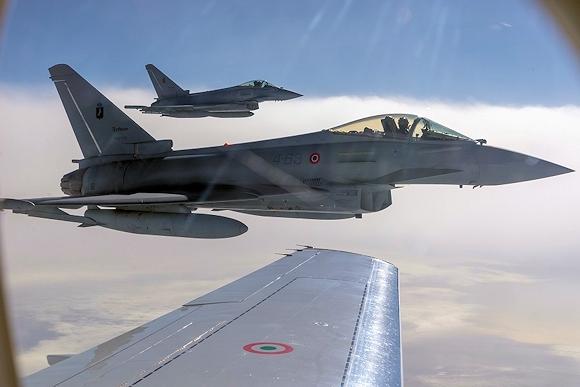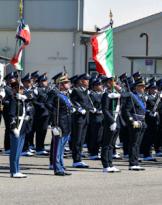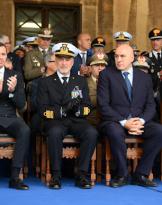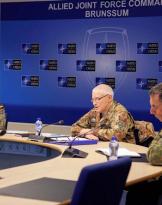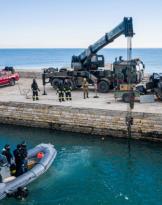A group of terrorists aboard a scheduled flight decides to hijack the aircraft, forcing the crew to change the planned route and thus triggering the international airspace defense device. This is the scenario of the "Circaete 2018", an air defense exercise that took place in recent days over the Mediterranean skies with the participation of the countries participating in the "5 + 5 Initiative" with the aim of testing the reactivity of national surveillance systems. and defense of airspace in countering non-military air threats and promoting coordinated use of related command and control centers, radar sites and interceptor fighters.
The collaboration agreement, born in 2004 on an Italian proposal, intends to promote cooperation on common security and defense issues and contribute to regional stability and mutual understanding between the countries of the two shores of the Western Mediterranean: that of the north, to which part France, Italy, Malta, Portugal and Spain, and that of the south, with Algeria, Libya, Mauritania, Morocco and Tunisia.
The 2018 edition of Circa was organized by the Air Force - it falls in the year of the Italian presidency of the "Defense 5 + 5 Initiatives" - and is part of the activities promoted by the Ministry of Defense to seek solutions and joint cooperation projects, in particular in the fields of maritime surveillance , the contribution of the armed forces to the Civil Protection, training and research, and precisely in the field of air defense. A very current threat, that to the safety of the skies, as evidenced by the episodes of the hijacking of the Libyan Airbus 320 on 23 December 2016, then landed in Malta, and of the Ethiopian Airlines plane that on 17 February 2017 had to travel the route from Addis Ababa to Rome and which was diverted to the Geneva airport. The Air Force is promoting in particular, in this area, initiatives aimed at increasing the mutual knowledge and interoperability of the air forces of the 10 Member States, making available the skills developed in some specific operational and technological areas such as that of electronic command and control systems, that of remotely piloted aircraft, search and rescue (SAR - search and rescue) and Personnel Recovery.
The exercise scenario - A military transport aircraft, in this Italian case, a Falcon 900 easy of the 31 ° Stormo of the Italian Air Force, simulated to be a so-called "renegade" civil aircraft, or - as they are called in technical jargon - those civil aircraft in arrival or transit in the national airspace whose conduct is potentially dangerous for security as it is attributable to a possible terrorist action. The command and control and radar surveillance centers of the countries affected by the aircraft's route, as well as the pilots and personnel of the air defense bases involved, will have to react in a timely and coordinated manner to intercept and conduct - just as it would in reality - the threat out of national airspace or forced landing on a designated airport, according to the indications given from the ground following established protocols. The aim of the exercise, which is carried out annually, is precisely to promote and consolidate the adoption of common procedures in the management of cases of this kind, where the competence remains with the individual nations but where it is essential - given the speed and complexity of the required interventions - act in a coordinated manner between neighboring nations.
The phase of the exercise in the Italian airspace was managed by the Italian - Air Operation Center of the Air Operations Command of Poggio Renatico (Ferrara), the command and control center of the Italian Air Force from where surveillance is ensured 24 hours a day. of national airspace and where necessary from where the immediate take-off orders for interceptor fighters depart. the Eurofighter pilots and fighters of the 24 ° Stormo di Grosseto, the 4 ° Stormo di Gioia del Colle and the 36 ° Stormo di Trapani took off in a few minutes from the "scramble" order, ie immediate take-off on alarm, to intercept and escorting the suspect aircraft outside the national borders, ensuring continuity with the French and later Tunisian Air Defense assets with a sort of "flying relay".
A Tunisian F-5 aircraft that took part in the exercise crashed into Tunisian territorial waters. The pilot was saved using the ejection seat and was identified and then retrieved by a Tunisian UH-60 helicopter. Under the direction and coordination of the Air Operations Command (COA), national structures including a P72-A marine patrol aircraft belonging to the 41 ° Stormo di Sigonella (CT), whose crew consists of 'Aeronautica Militare and of the Navy. An HH-212 helicopter from the 80 Center SAR of Decimomannu (CA) was also activated.

